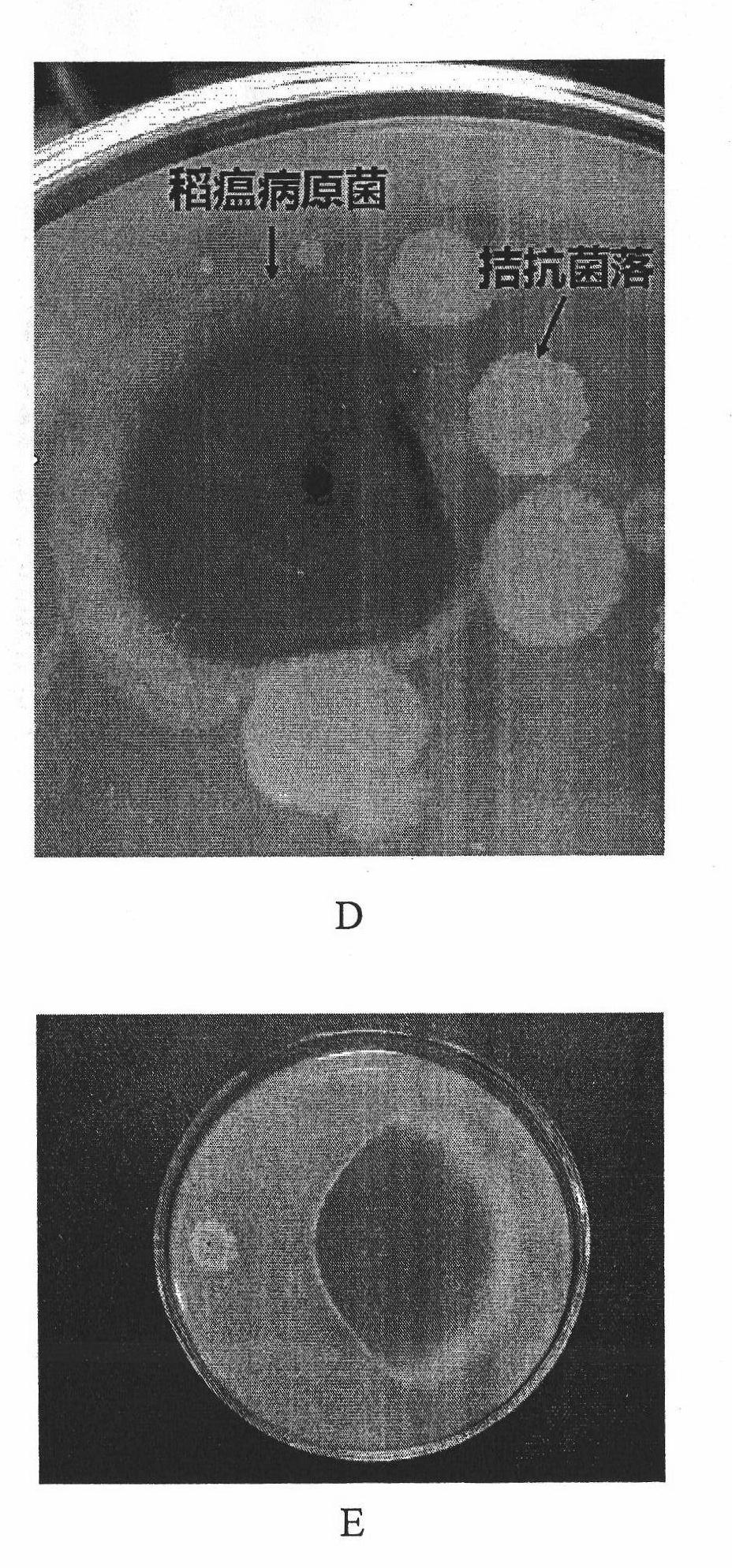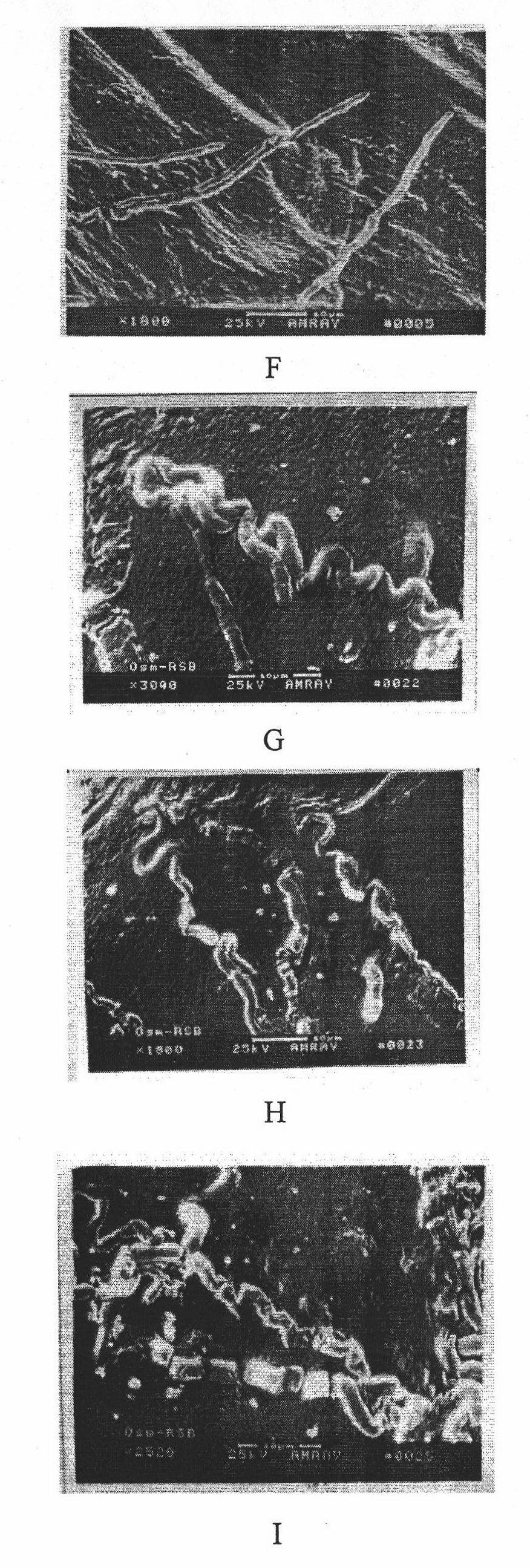Bacillus stain for preventing and controlling rice blast and rice sheath blight
A technology for rice blast and bacillus, applied in the direction of bacteria, fungicides, and microbial-based methods, can solve the problems of polluted environment and increased drug resistance of pathogenic bacteria
- Summary
- Abstract
- Description
- Claims
- Application Information
AI Technical Summary
Problems solved by technology
Method used
Image
Examples
Embodiment 1
[0020] Example 1 Screening method for bacterial strain XZJ.BP01
[0021] 70% ethanol was used to disinfect the sweet-scented osmanthus fruit, and washed with sterilized water for 3 times. Then the fruit is crushed and centrifuged to obtain the supernatant, which is applied to the PDA solid medium (200 grams of potatoes, 15 grams of sucrose, 18 grams of agar, 1000 milliliters of water, pH7.0), inoculated with rice blast and sheath blight pathogen, placed Cultured in a constant temperature incubator at 28°C. Screen out strains that inhibit the growth of pathogenic bacteria. Monoclonal strains were isolated by streak culture method.
Embodiment 2
[0022] Embodiment 2 Antibiotic research of antagonistic bacteria
[0023] Rice sheath blight bacteria and bacterial strain XZJ.BP01 were inoculated simultaneously in a plate equipped with PDA medium, and the diameter of the inoculated bacteria cake was 1 cm. The distance between the two mushroom cakes is 5 cm. After inoculation, they were cultured in a constant temperature incubator at 28°C, and the colony morphology was observed after 6 days.
[0024] The sheath blight bacteria and the strain XZJ.BP01 were inoculated by the confrontation method, and the sheath blight mycelia and normal mycelia on the edge of the confrontation were picked and observed under an ordinary optical microscope and scanned by an electron microscope.
Embodiment 3
[0025] The identification of embodiment 3 bacterial strains
[0026] A. Morphological characteristics: After culturing on PDA medium at 28° C. for 3 days, routine bacterium morphology was observed with a scanning electron microscope and an optical microscope.
[0027] B. Physiological and biochemical experiments: Physiological and biochemical identification of bacterial strains was carried out with reference to the contents of "Bergey's Bacterial Identification Manual (Eighth Edition)".
[0028] Bacterial universal primers P2F (5'-agccaggatcaaactctg-3') and P5R (5'-aggaggtgatccagccgca-3') were used to amplify and sequence the 16rDNA of strain XZJ.BP01, and the obtained 16rDNA was compared on NCBI. The similarity of Bacillus reached 99%, and it was basically determined to be Bacillus pumilus.
PUM
 Login to View More
Login to View More Abstract
Description
Claims
Application Information
 Login to View More
Login to View More - R&D
- Intellectual Property
- Life Sciences
- Materials
- Tech Scout
- Unparalleled Data Quality
- Higher Quality Content
- 60% Fewer Hallucinations
Browse by: Latest US Patents, China's latest patents, Technical Efficacy Thesaurus, Application Domain, Technology Topic, Popular Technical Reports.
© 2025 PatSnap. All rights reserved.Legal|Privacy policy|Modern Slavery Act Transparency Statement|Sitemap|About US| Contact US: help@patsnap.com



